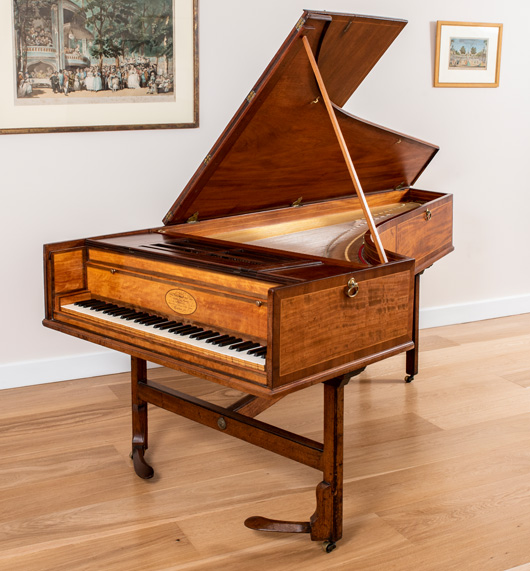Grand piano by John Broadwood and Son, London, 1801
Compass: FF - c''''
English grand action.
Pedals for una corda / due corde and dampers.
Compass: FF - c''''
English grand action.
Pedals for una corda / due corde and dampers.

John Broadwood perfected the English grand piano action in collaboration with fellow piano builders Americus Backers and Robert Stodart during his partnership with the harpsichord maker Burkat Shudi. After Shudi’s death in 1773, the firm came increasingly under Broadwood’s sole direction and began to turn its focus towards piano manufacture. From the start, Broadwood pianos were highly praised for their fine craftsmanship and tone, both of which qualities are still evident in surviving instruments after more than two centuries. Accordingly, the firm became a household name and is even mentioned in contemporary literary fiction. This 1801 grand piano is a typical example of the type of instrument for which Broadwood gained a reputation and is similar to the instruments that most interested Haydn and Dussek during their visits to London in the 1790s. The compass of the piano extends to c in the treble and was introduced around 1790 at Dussek’s suggestion, who claimed it allowed for the possibility of greater brilliance in performance. This instrument has two pedals, one for raising the dampers so that the vibrations of the strings may be sustained and a second which shifts the action laterally, moving the hammers from striking the default three unison strings for each note, to striking two and finally one. This feature enables greater dynamic shading and contrast, which is heightened by the ethereal effect created by the sympathetic vibration and resonance of the un-struck unison strings.
There's nothing remarkable about it. All one has to do is hit the right keys at the right time and the instrument plays itself
Johann Sebastian Bach